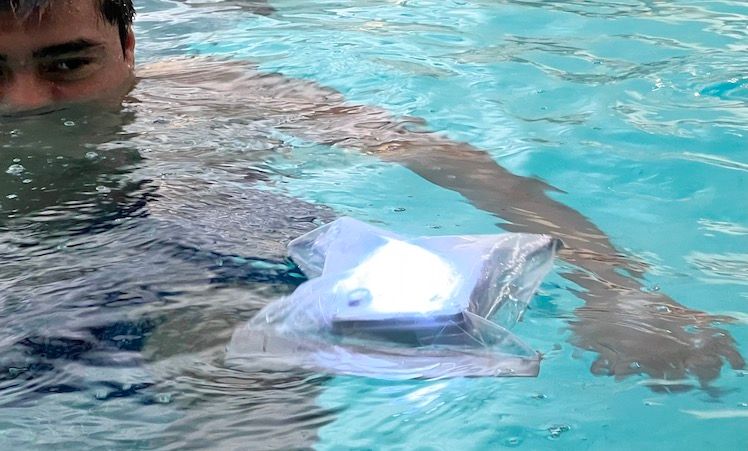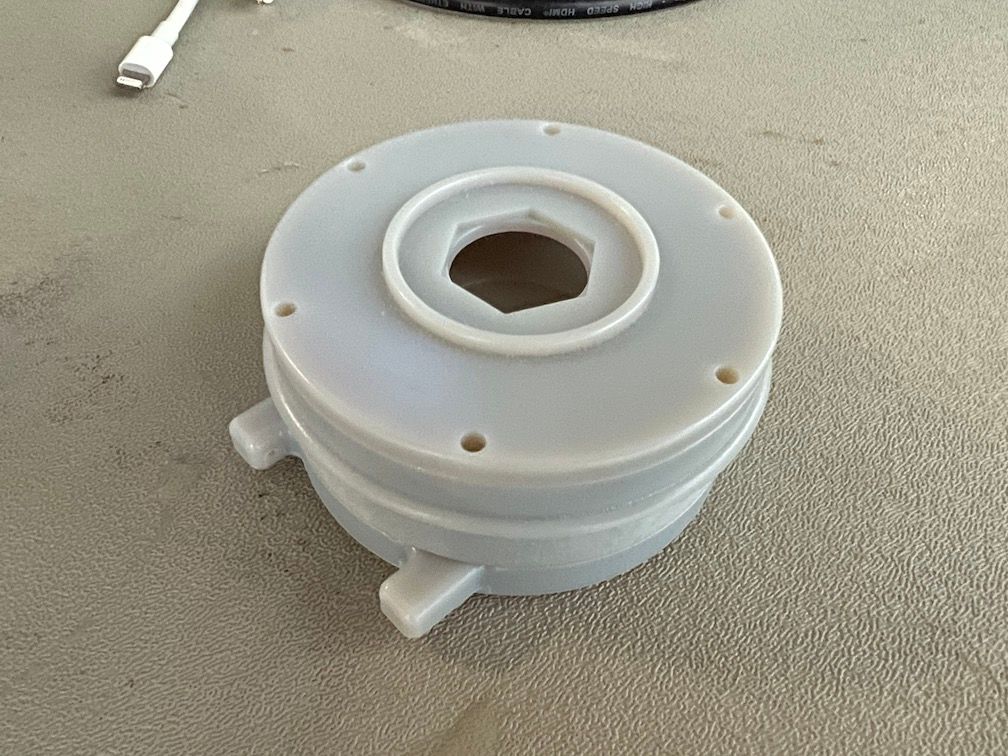Blue Team!
Technical Review!
Presentation Video
Drowning Alert
Wristband for young swimmers that is manually activated to deploy an alert to the surface of the water, making it easier for parents to notice them.
Photos
Reviewer Feedback
Chuck Xia
Feedback
The body parts that moves the most during swimming are your arm and leg. Would it be better to place it somewhere with less movement and less intrusive when swimming? What is the form that is most suited for the function? Once the system float up, noticeability is the most important thing. You want to get the life guard or parent's attention right away. Localization is second step. Currently the light and sound are not enough. Camera flash is really bright for that one shot. I would recommend using that circuit setup to create bright flashes. Use the similar one shot idea have a really one or two really loud alarm to get the attention. Are our instincts more aware of or on alert for loud 1 time sensory event or repetitive sensory event? You could design the housing to make it friendly for kids. Make it creative and fun, so they want to put it on.
Steve Banzaert
Feedback
We should chat - you all have encountered a classic case of the system architecture lagging the functional design vision. I'm pretty sure you can actuate everything with some switches and zero computation, which should reduce your part count by maybe a factor of 10. You also ought to be able to buy a self-oscillating piezo buzzer that will be ear-piercingly loud. I can help you with that sourcing too if needed. Your goals of miniaturizing the device run up against some scaling issues because the device needs airtight walls regardless of its total volume - it's not too hard to put together a spreadsheet (or more complex analysis in Matlab) that lets you look at internal air volume vs total mass, wall thickness, outside surface area, etc at a high level to help you understand the tradeoffs you're dealing with.
Dave Custer
Feedback
Hi Blue Team folks, Your pivot away from sensing whether a swimmer is drowning has the disadvantage that now the swimmer must be cognizant and physically able to activate the buoy. That ability + the fine line between the forces exerted during normal swimming and those needed to deploy the buoy seem to me to be your biggest challenges, both for the design itself and for explaining your invention to people. In the tech review conversation, there was some talk of a companion app for a parent's phone. It occurs to me that the parent's phone could be paired with a device that floats in the water, keeps track of the swimmer's movement/location, and can remotely activate the buoy. This direction doesn't change what you do in the next few weeks, but does suggest that your work leads to new, perhaps interesting design spaces. Kudos on this count. You might find it useful to take a look at the IEC/ISO standards for luminaries, especially in regard to child/battery safety, general battery/battery housing safety, and requirements for alerting the user when the battery is low. I think much is covered in these: IEC 60598-2-4 Portable general purpose luminaries IEC 60598-2-10 Portable luminaries for children IEC 60598-2-10 Luminaries for swimming pools and similar applications You can ask the librarian for these. In some sense, your invention can be considered as a portable luminary. PS: Would a Halback array reduce the mass/volume of your magnet and thus reduce size and increase the buoyancy of your device?
Rich Wiesman
Feedback
You've made some good choices to simplify your product design and make it a user triggered warning. Consider the following: 1. The magnetic attachment you showed was not a neodymium magnet -- this type of magnet would have had a much higher holding force -- maybe too high in the size you showed. As we discussed, consider optimizing the shape and fit of the removable piece to insure that the piece doesn't come off during normal activities, yet is removable when the user needs it. Look at the small 3M patches that are used to secure toll transponders to windshields. These are not velcro. Up close they look like lots of tiny mushrooms that interlock and they act like snaps to hold and release items. These would not be affected by water. 2. Can you make a bigger noise and/or a brighter flash to attract attention? Can you make this noise and flash repetitive? It's going to be difficult to detect the alarm and/or the flash in a crowded pool in daylight. Camera flash bulbs were brought up, but maybe strobes that repeat every second or two. How else can noise be generated more effectively? Look at the noise sources in smoke, CO and heat alarms -- they seem louder and maybe you can find something that's waterproof. Are there any chemical based noise generators that might be more effective? How about starter pistols used in track and field events? They use starter blanks that make a pretty round crack. 3. Is the wrist necessarily the best place to wear the device? Would a waist-worn device be less intrusive on normal pool activities while still allowing the ha ds to grasp it when needed?
Rebecca Thorndike-Breeze
Feedback
Good work on further developing this design, Blue. But as other reviewers note, the self-deploy design poses new problems. If a child is in distress, I don’t know that they will be able to pull on their buoy; and on the flip side, children tend to fidget and play with things, so they could deploy the buoy accidentally. Even if you're able to make the device smaller, these issues will persist. Training the child seems to be an important aspect of whether this product will serve its purpose.
James Penn
Feedback
Good job simplifying your product. To complement that decision, you might want to focus on a situation for which your user would typically be capable of performing the necessary steps to use your product successfully. One possibility might be a user who finds themselves caught in a rip current that quickly pulls them away from shore, in which case your device could help to alert a lifeguard and allow your user to focus on staying afloat long enough to be rescued---or to escape the current. That scenario might also lend itself to relatively simple, alternative modes of detection, such as monitoring one's distance from the shore. To achieve the volume you need for buoyancy without becoming too clunky, you could consider moving away from the bed/buoy approach and convert the design so that the entire device ends up being the buoy. One way of doing that might be a bracelet with an easy-release clasp that uses a switch to activate the device when released. The form and articulation could be similar to a handcuff, but wider. An alarm such as that of a smoke detector should be able to produce the loudness you need at the power levels you can afford. For a visual aid, perhaps a multi-faceted reflector would be more effective than an LED in your typical bright-sunlight scenarios.
Ellen Roche
Feedback
Hi Blue! I tried to summarize some of the staff discussions here. I hope this format is helpful and saves you some time. We are here for you for whatever you need in the next 13 days :) ● Simplify electronics to switch (I think you've done this!) ● Stronger magnet (also done :)) ● Loud alarm, bright light required ● Think about deconstructing a smoke alarm and strobe light or a smoke alarm WITH a strobe light (commercial) ● Creative, friendly housing for kids (can be shown as render) ● Consider 3M patches with microstructures - interlocking structures. ● Consider starter blanks from starter pistols (track and field events) ● Explore a waist worn device? ● Consider multi-faceted reflector to enhance light signal ● Consider the entire device being the buoy - like a bracelet with easy release clasp + switch ● Make it translucent (in render) Go bluuuue!


